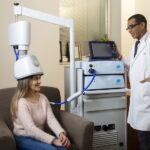The virus appears to be spread through small respiratory droplets produced when an infected person coughs or sneezes, although it can also be spread if people touch an object contaminated with the virus and then touch their mouth, nose or eyes , some reports suggest that the virus can cause conjunctivitis and be transmitted by aerosol contact with the conjunctiva.
What should you do to protect yourself?
To protect against possible coronavirus infections , generic protective measures against respiratory diseases should be followed:
- Wash your hands frequently (with soap and water or alcohol solutions).
- Avoid close contact with people showing signs of respiratory problems, such as coughing or sneezing.
- Keep a distance of about one meter from people showing symptoms of acute respiratory infection.
- Cover your mouth and nose with tissues or cough or sneeze and wash your hands afterwards.
- See a doctor if you have fever , cough, and shortness of breath.
What should ophthalmologists know?
Several reports suggest that the virus can cause conjunctivitis and can be transmitted by aerosol contact with the conjunctiva.
Patients presenting to ophthalmologists with conjunctivitis who also have fever and respiratory symptoms, including cough and shortness of breath, and who have recently traveled abroad, could represent cases of COVID-19 .
Professionals recommend mouth, nose and eye protection when caring for potentially infected patients.
The virus that causes COVID-19 is very susceptible to the same alcohol- and bleach-based disinfectants that ophthalmologists commonly use to disinfect ophthalmic instruments.
To prevent the transmission of COVID-19, the same disinfection practices already used to prevent the office spread of other viral pathogens are recommended before and after each patient encounter.
Diar Saada Clinic wants our community to stay up to date with the latest information on the COVID-19 outbreak, available on our website and social media
Clinqiue Diar Saada reference center in laser vision correction.
vision and the health of your eyes. From there, he can select the appropriate tests for a complete eye examination
There are certain types of tests that are done for everyone during a complete eye exam, such as visual acuity tests. For some people with specific vision problems, additional tests, such as tests for color blindness, may be done
The following types of tests highlight the wide range of vision tests available:
visual acuity test
This type of test is done to determine the clarity of your vision. Your eye doctor will usually ask you to review a chart for this exam. You will be asked to read numbers or letters on a particular line.
In some cases, eye doctors give you a book to read. This one is used to determine the acuity of your close-up vision.
color blindness test
For this test, you are asked to refer to a brochure. There will be points of different brightness, colors and sizes. If you have normal color vision, you






Leave a Reply